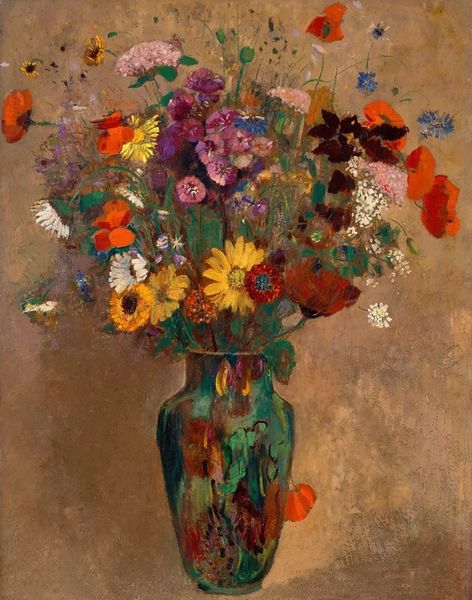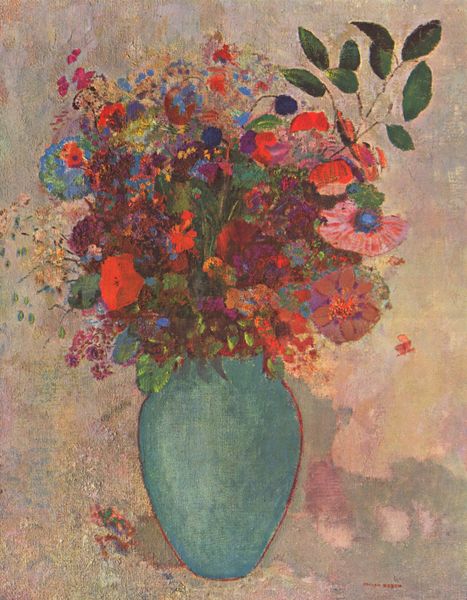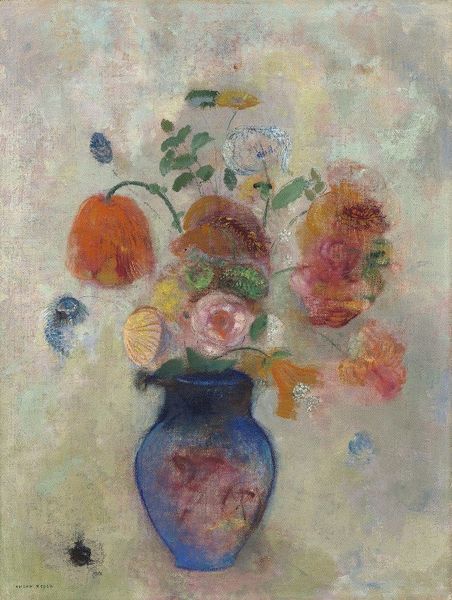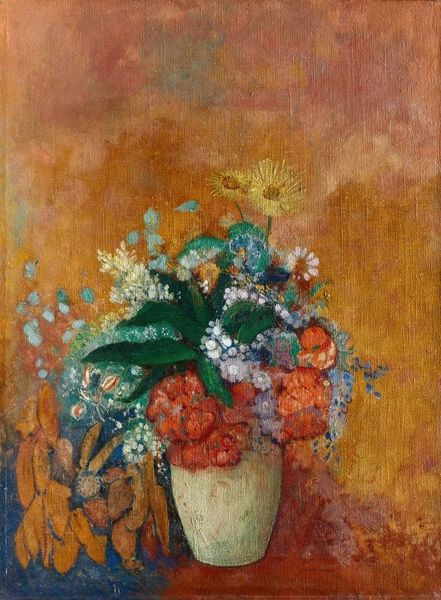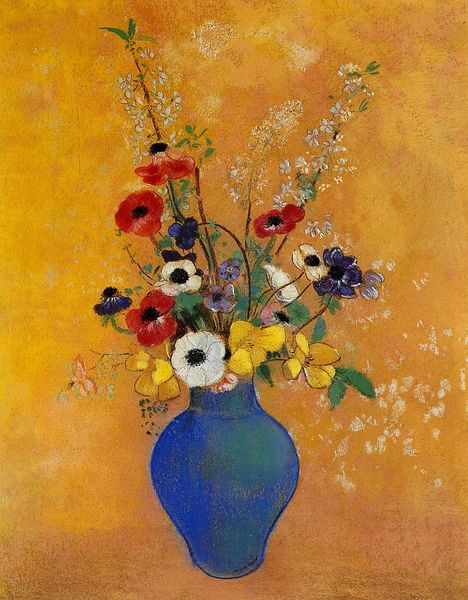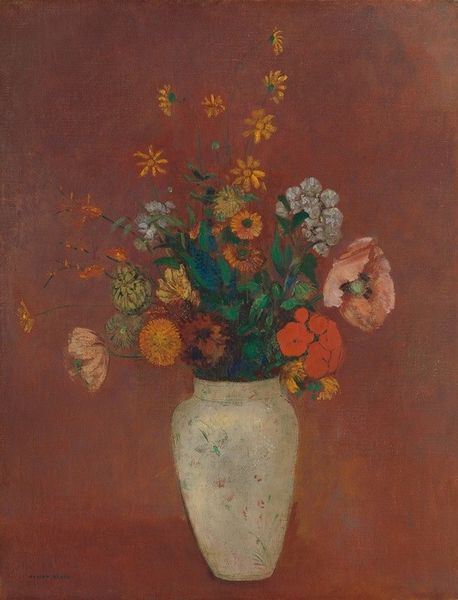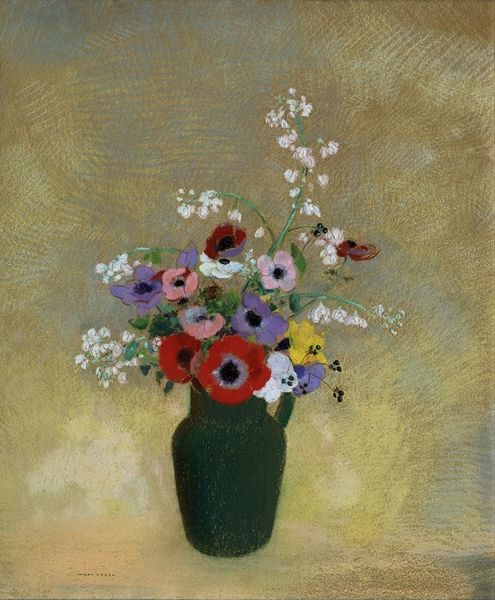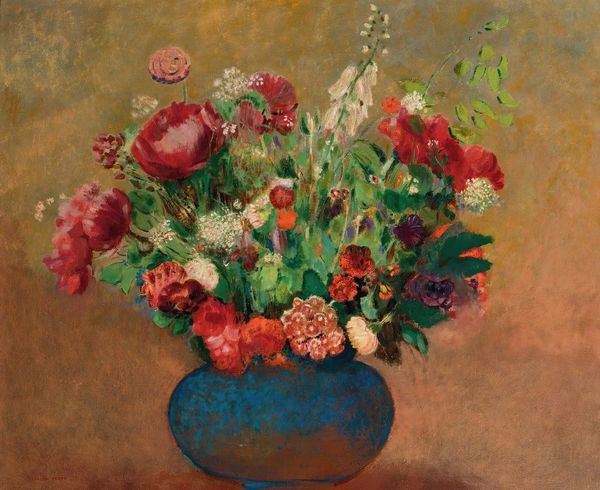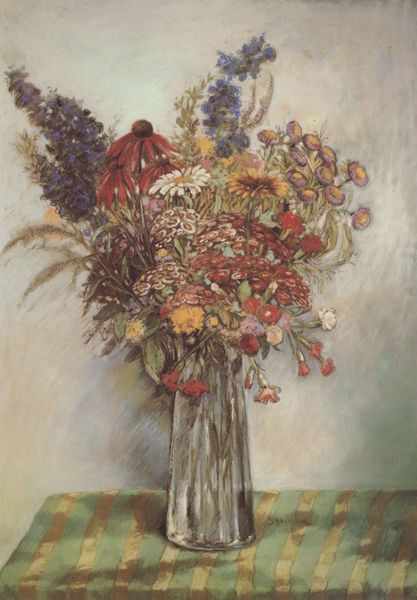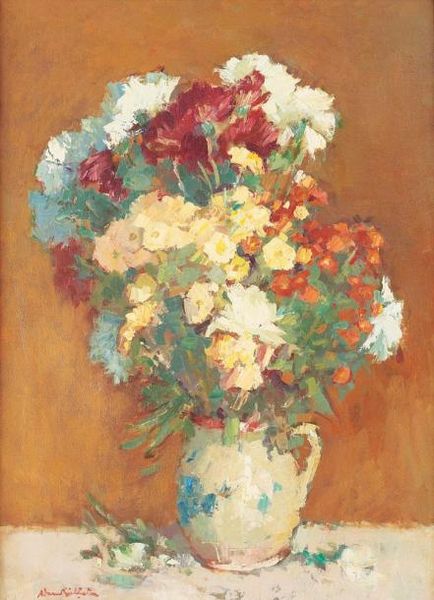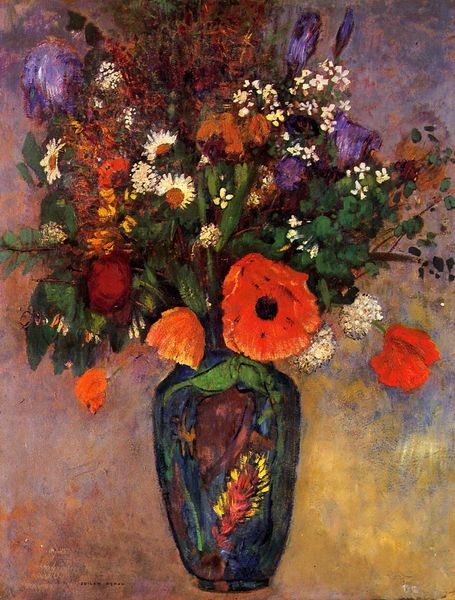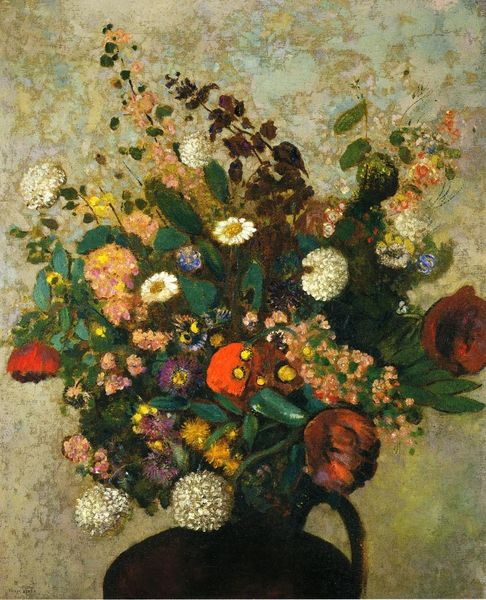
painting, oil-paint
#
portrait
#
gouache
#
painting
#
oil-paint
#
symbolism
Copyright: Public Domain: Artvee
Curator: Take a moment to gaze upon “Vision; vase of flowers” by Odilon Redon, crafted circa 1900. There's a hazy quality, isn’t there? It almost vibrates with color. Editor: Yes, there's an unsettling vibrancy despite the muted palette. It evokes a sense of fin-de-siècle unease mixed with delicate beauty. I find the composition itself striking, particularly in its departure from the strict academic arrangements popular at the time. It feels both traditional and daring. Curator: Redon existed in opposition to many artistic orthodoxies, aligning more with Symbolism. The painting, done in oil paint, pulses with the kind of subjectivity and dreamlike imagery they embraced. Consider what this “vision” represents against a backdrop of intense societal and political change at the turn of the century. Editor: Precisely. These weren't merely flowers in a vase. The Symbolists used floral arrangements frequently, yes, but their interest in subjective, internal states makes you consider them as symbols laden with complex meanings – decay, rebirth, hidden desires. Look at how the blossoms seem almost to detach from reality. The hazy brushstrokes could easily represent those ephemeral elements of societal decay in light of new advancements in the sciences at the time. Curator: Redon explored such themes throughout his career, influenced significantly by the philosophical currents of his time, including his engagement with Schopenhauer and Baudelaire. I think it’s fascinating how his choices reflect an interest in individual versus societal perception. We might interpret the intense hues as expressions of a particular inner consciousness and unique emotional perception. Editor: Right. We must understand that it isn’t enough to see beauty alone, in a way it's Redon saying he wants us to feel the pressure on individual versus community—then ask ourselves what such symbolism says about the period. These aren't straightforward acts of appreciation for art. They're clues—a quiet rebellion against artistic dogma while engaging in larger sociopolitical discourses. Curator: Thank you, your interpretations give me an increased understanding of our place within shifting cultural contexts and shared histories. Editor: And for me, these flowers, once carefully placed within their era, show me there is beauty and purpose to be found while challenging entrenched systems and assumptions about ourselves and others.
Comments
No comments
Be the first to comment and join the conversation on the ultimate creative platform.
